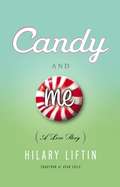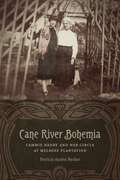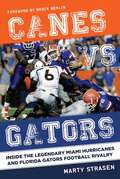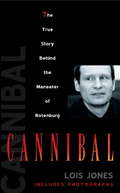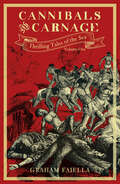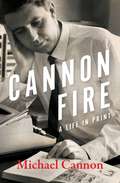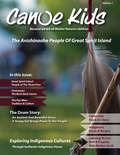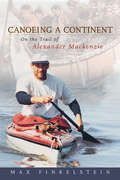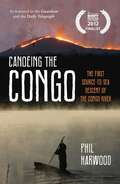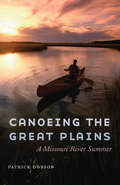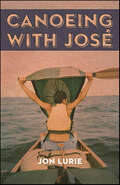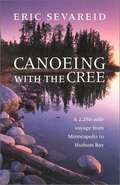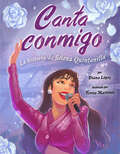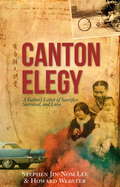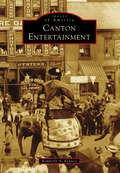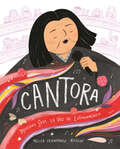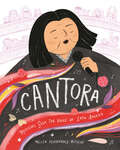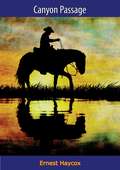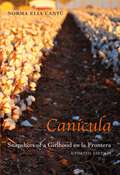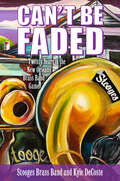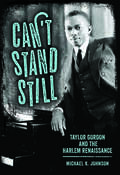- Table View
- List View
Candy and Me
by Hilary LiftinAs a seven-year-old child, Hilary Liftin poured herself a glass (or two) of powdered sugar. Those forbidden cups soon escalated to pound bags of candy corn and multiple packets of dry cocoa mix, launching the epic love affair between Hilary and all things sweet. In Candy and Me: A Love Story, Liftin chronicles her life through candy memories and milestones. As a high school student, Hilary used candy to get through track meets, bad hair days, after-school jobs, and her first not-so-great love. Her sweet tooth followed her to college, where she tried to suppress the crackle of Smarties wrappers in morning classes. Through life's highs and lows, her devotion has never crashed -- candy has been a constant companion and a refuge that sustained her. As Liftin recounts her record-setting candy consumption, loves and friendships unfold in a funny and heartbreaking series of bittersweet revelations and restorative meditations. Hilary survives a profound obsession with jelly beans and a camp counselor, a forgettable fling with Skittles at a dot-com, and a messy breakup healed by a friendship forged over Circus Peanuts. Through thick and thin, sweet and sour, Hilary confronts the challenges of conversation hearts and the vagaries of boyfriends, searching for that perfect balance of love and sugar. Written with a fresh dry humor that will immediately absorb you into Liftin's sweet obsessions and remind you of your own, Candy and Me unwraps the meaning found in the universal desire for connection and confection. Treat yourself to Candy and Me -- being bad never read so good.
Cane River Bohemia: Cammie Henry and Her Circle at Melrose Plantation
by Patricia Austin BeckerA National Historic Landmark with a complex and remarkable two-hundred-year history, Melrose Plantation near Natchitoches, Louisiana, was home to many notable women, including freedwoman and entrepreneur Marie Thérèse Coincoin and artist Clementine Hunter. Among that influential group, Cammie Henry, the mistress of Melrose during the first half of the twentieth century, stands out as someone who influenced the plantation’s legacy in dramatic and memorable ways. In Cane River Bohemia, Patricia Austin Becker provides a vivid biography of this fascinating figure.Born on a sugar plantation in south Louisiana in 1871, Cammie Henry moved with her husband to Melrose in 1899 and immediately set to work restoring the property. She extended her impact on Melrose, the surrounding community, and the region when she began to host an artist colony in the 1920s and 1930s. Writers and painters visiting the bucolic setting could focus on their creative pursuits and find encouragement for their efforts. The most frequent visitors—considered by Cammie to be her circle of “congenial souls”—included writer/journalist Lyle Saxon, naturalist Caroline Dormon, author Ada Jack Carver, and painter Alberta Kinsey. Artists and artisans such as Harnett Kane, Roark Bradford, William Spratling, Doris Ulmann, and Sherwood Anderson also found their way to Melrose.In addition to hosting well-known guests, Henry began a collection of history books, nineteenth-century manuscripts, and scrapbooks of clippings and memorabilia that later brought her attention from the wider world. Researchers and writers contacted Henry frequently as the reputation of her library grew, and today the Cammie G. Henry Research Center at Northwestern State University houses this impressive collection that serves as a lasting tribute to Henry’s passion for the preservation of words as well as for the South’s material culture, including quilting, spinning, and gardening.
Canes vs. Gators: Inside the Legendary Miami Hurricanes and Florida Gators Football Rivalry
by Marty Strasen Brock BerlinAll parties seem to be in agreement that the rivalry between the University of Miami and the University of Florida is as nasty and historical as they come; going back to the thirties, it’s the state of Florida’s oldest major rivalry. Gators beat writer Pat Dooley described the vitriolic rivalry to the author simply as "vile.”History would prove that to be true. In Canes vs. Gators, coaches Urban Meyer, Howard Schnellenberger, Steve Spurrier, Larry Coker, and Ron Zook and several former notable players on both sides of the rivalry, along with key media members for both schools, offer their unique commentary on the intensity of the rivalry. For example, Schnellenberger recalled with anger that after his staff and team were pelted with frozen oranges in 1980, he kicked an extra meaningless field goal in a blowout victory . . . and he wished he’d called on his punter to take the ball and launch it into the Florida student section!Author Marty Strasen, who covered both schools for over a decade, brings to life the greatest moments of this historic rivalry. This book is the perfect gift for Florida college football fans!Skyhorse Publishing, as well as our Sports Publishing imprint, are proud to publish a broad range of books for readers interested in sports-books about baseball, pro football, college football, pro and college basketball, hockey, or soccer, we have a book about your sport or your team.Whether you are a New York Yankees fan or hail from Red Sox nation; whether you are a die-hard Green Bay Packers or Dallas Cowboys fan; whether you root for the Kentucky Wildcats, Louisville Cardinals, UCLA Bruins, or Kansas Jayhawks; whether you route for the Boston Bruins, Toronto Maple Leafs, Montreal Canadiens, or Los Angeles Kings; we have a book for you. While not every title we publish becomes a New York Times bestseller or a national bestseller, we are committed to publishing books on subjects that are sometimes overlooked by other publishers and to authors whose work might not otherwise find a home.
Cannibal
by Lois JonesGerman native Armin Meiwes placed this ad in an internet chatroom catering to cannibals. He received 430 responses. Among them was Bernd Juergen Brandes, who arrived at Meiwes’s isolated country home literally to be eaten alive. Escorted to the “slaughtering room”—equipped with meat hooks, a cage, and a butcher’s table—Meiwes assisted Bernd in a gourmet candlelight dinner of his own cooked flesh. Meiwes then stabbed his victim in the throat—bringing the ghastly videotaped ordeal to an end. From a childhood perverted by unhealthy obsessions to his notorious trial that ended in a stunning verdict, Cannibal discloses for the first time the true story of a real-life Hannibal Lecter and his victim. And with details never before divulged to the public, it takes readers step-by-step through the unspeakable crime that fascinated and revolted the world. INCLUDES PHOTOS
Cannibals and Carnage: Thrilling Tales of the Sea (vol.1) (Thrilling Tales of the Sea #1)
by Graham FaiellaIn the nineteenth century true stories of cannibal tribes massacring white traders (and vice versa) and missionaries fed the morbid appetites of Europeans, North Americans and colonials. Accounts of cannibalism committed by seafarers on their dead shipmates quickened the pulses of landfolk even more, and pricked their moral disquiet. Acts of desperate men committing unspeakable atrocities. The warring frenzy of cannibal headhunters and their gruesome feasting. Such was the stuff of real-life ‘sixpenny romances’, rich in human butchery and garnished with treachery and terror. The more atrocious the at rocities, the more exotic the locations; the more sensational the narratives, the greater was the thrall of these thrilling tales of the sea.
Cannon Fire: A Life in Print
by Michael CannonMichael Cannon is best known as the author of landmark and popular works of Australian history, including The Land Boomers (1966), and as the founding editor of Historical Records of Victoria. But Cannon, the child and grandchild of important figures in Australian independent journalism, developed a fascination with print media early in his life and had a long and colourful career in printing, publishing and editing books, newspapers and magazines. In Cannon Fire he brings to life many notable personalities with whom he worked, including Keith and Rupert Murdoch, and recreates the ink-stained, cigarette-smoke-filled and always well-lubricated worlds of publishing across Melbourne and Sydney in the second half of the twentieth century. More than this, Cannon's intimate account of a life that began in the 1920s fascinates as both a personal story of unusual courage in the face of challenge and heartache, and as a tale of times now passing from memory.
Canoe Kids Volume 1: The Anishinnabe (Ojibwe) Peoples of Great Spirit Island
by The communities of Manitoulin Island Canoe KidsCanoe Kids is a book that we hope you will keep. The information, stories and pictures are timeless and will never feel old. The stories are already thousands of years old and they are as relevant now (perhaps more so) than ever before. As your collection grows each new and old edition can be enjoyed, re-read and shared by new and old family members and acquaintances. Our team doesn't just travel and spend a few days in each location. We spend months on location and build real relationships. That means that the materials you read are not only the result of exhaustive work but also of the care and closeness of the friendships made within the community by the Canoe Kids staff. This, we believe, is much more than just reporting. This is our mission and lives too, and we are thrilled to have you join us on our journeys.
Canoeing a Continent: On the Trail of Alexander Mackenzie
by Max FinkelsteinA highly personal account of the travels of Max Finkelstein as he retraces, some two hundred years later, the route of Alexander Mackenzie, the first European to cross North America (1793). Mackenzie’s water trail is now commemorated as the Alexander Mackenzie Voyageur Route. More than just a travelogue of a canoe trip across Canada, this is an account that crosses more than two centuries. It is an exploration into the heart and mind of Alexander Mackenzie, the explorer, and Max Finkelstein, the "Voyageur-in-Training." Using Mackenzie’s journals and his own journal writings, the author creates a view of the land from two vantage points. The author retraced the route of Alexander Mackenzie across North America from Ottawa through to Cumberland House, Saskatchewan, and paddled the Blackwater, Fraser and Peace Rivers, completing the trip in 1999. This route is the most significant water trail in North America, and perhaps the world. "A ’must-read’ for everyone who loves wild places and the magic of canoes." - Cliff Jacobson, Outdoor Writer & Consultant "Past and present collide in this journey of discovery across the map of Canada. Max craves the extremes. He relishes in coping with what nature throws at him, punishing himself to find his physical limits and experiencing firsthand the inherent dangers in such a voyage. With Alexander Mackenzie as his guide and inspiration, Max finds the strength to carry on against all odds to forge poignant historical and personal links in this incredible cross-Canada paddling odyssey." - Becky Mason, Artist and Paddler, Chelsea, Quebec
Canoeing the Congo: The First Source-to-Sea Descent of the Congo River
by Phil HarwoodEx-Marine Phil Harwood embarked on an epic solo journey on the Congo, the eighth longest river in the world. He faced swamps, man-eating crocodiles, snakes and spiders’ webs the size of houses. He collapsed from malaria, and was arrested. But he also received tremendous hospitality from proud people long forgotten by the Western world.
Canoeing the Congo: The First Source-to-Sea Descent of the Congo River
by Phil HarwoodEx-Marine Phil Harwood embarked on an epic solo journey on the Congo, the eighth longest river in the world. He faced swamps, man-eating crocodiles, snakes and spiders’ webs the size of houses. He collapsed from malaria, and was arrested. But he also received tremendous hospitality from proud people long forgotten by the Western world.
Canoeing the Great Plains: A Missouri River Summer
by Patrick DobsonTired of an unfulfilling life in Kansas City, Missouri, Patrick Dobson left his job and set off on foot across the Great Plains. After two and a half months, 1,450 miles, and numerous encounters with the people of the heartland, Dobson arrived in Helena, Montana. He then set a canoe on the Missouri and asked the river to carry him safely back to Kansas City, hoping this enigmatic watercourse would help reconnect him with his life. In Canoeing the Great Plains, Dobson recounts his journey on the Missouri, the country’s longest river. Dobson, a novice canoeist when he begins his trip, faces the Missouri at a time of dangerous flooding and must learn to trust himself to the powerful flows of the river and its stark and serenely beautiful countryside. He meets a cast of characters along the river who assist him both with the mundane tasks of canoeing—portaging around dams and reservoirs and finding campsites—and with his own personal transformation. Mishaps, mistakes, and misadventures plague his trip, but over time the river shifts from being a frightening adversary to a welcome companion. As the miles float by and the distinctions blur between himself and what he formerly called nature, Dobson comes to grips with his past, his fears, and his life beyond the river.
Canoeing with José
by Jon LurieThe first time journalist Jon Lurie meets José Perez, the smart, angry, fifteen-year-old Lakota-Puerto Rican draws blood. Five years later, both men are floundering. Lurie, now in his thirties, is newly divorced, depressed, and self-medicating. José is embedded in a haze of women and street feuds. Both lack a meaningful connection to their cultural roots: Lurie feels an absence of identity as the son of a Holocaust survivor who is reluctant to talk about her experience, and for José, communal history has been obliterated by centuries of oppression.Then Lurie hits upon a plan to save them. After years of admiring the journey described in Eric Arnold Sevareid&’s 1935 classic account, Canoeing with the Cree, Lurie invites José to join him in retracing Sevareid&’s route and embarking on a mythic two thousand-mile paddle from Breckenridge, Minnesota, to the Hudson Bay.Faced with plagues of mosquitoes, extreme weather, suspicious law enforcement officers, tricky border crossings, and José&’s preference for Kanye West over the great outdoors, the journey becomes an odyssey of self-discovery. Acknowledging the erased native histories that Sevareid&’s prejudicial account could not perceive, and written in gritty, honest prose, Canoeing with José is a remarkable journey.
Canoeing with the Cree
by Eric SevareidIn 1930 two novice paddlers--Eric Sevareid and Walter C. Port--launched a secondhand 18-foot canvas canoe into the Minnesota River at Fort Snelling for an ambitious summer-long journey from Minneapolis to Hudson Bay. Without benefit of radio, motor, or good maps, the teenagers made their way over 2,250 miles of rivers, lakes, and difficult portages. Nearly four months later, after shooting hundreds of sets of rapids and surviving exceedingly bad conditions and even worse advice, the ragged, hungry adventurers arrived in York Factory on Hudson Bay--with winter freeze-up on their heels. First published in 1935, Canoeing with the Cree is Sevareid's classic account of this youthful odyssey. The newspaper stories that Sevareid wrote on this trip launched his distinguished journalism career, which included more than a decade as a television correspondent and commentator on the CBS Evening News.
Canon Law and the Letters of Ivo of Chartres
by Christof RolkerThe series Cambridge Studies in Medieval Life and Thought was inaugurated by G. G. Coulton in 1921; Professor Rosamond McKitterick now acts as General Editor of the Fourth Series, with Professor Christine Carpenter and Dr Jonathan Shapard as Advisory Editors. The series brings together outstanding work by medieval scholars over a wide range of human endeavour extending from political economy to the history of ideas. Book jacket.
Canta conmigo: La historia de Selena Quintanilla
by Diana LópezUn libro de cuentos ilustrado que celebra la vida y el legado de Selena Quintanilla, la querida Reina de la Música Tejana.Desde su etapa mas temprana, la joven Selena sabía como conectarse con la gente y unirlos con la música. Canta conmigo sigue su ascenso al estrellato, desde su puesto al frente de la banda familiar, cantando en rodeos y fiestas de quinceañera, hasta su presentación frente a miles en el Astrodomo de Houston. Los lectores jóvenes se sentirán empoderados por la dedicación de Selena--aprendiendo el idioma español aún siendo adolescente, diseñando su propio vestuario, y viajando por toda la nación, compartiendo con el mundo el orgullo por sus raíces mexico-americanas y su amor a la música y a la moda.
Canton Elegy
by Stephen Lee Howard WebsterStephen Lee's grandchildren knew him as a humble grocer. Beneath his humble exterior, however, lay one of the most extraordinary stories of the twentieth century. Lee was born in Canton, China in 1902. As a teenager he was sent to live with relatives in San Francisco. He attended college at Iowa State and later transferred to UC Berkeley where he was one of the first Chinese-Americans to receive a degree. The widespread racism of the time prevented Lee from landing a job in his chosen field of finance, so he burned his papers and returned home to China. With the clouds of war gathering, Lee, an anti-communist, found work in the accounting and logistics office of the Cantonese Air Force where he quickly rose to Colonel and comptroller. In 1929, after securing his position, he married a local beauty named Belle and in 1930, his first child, Amy, was born. When the Japanese pushed south from Manchuria in 1936, the Cantonese Air Force was merged with that of Chiang Kai-shek's and Lee was forced to flee with his wife and four children to Hong Kong. There Lee took a job with the Canton Trust Company. On the eve of the bombings at Pearl Harbor, the board of the Canton Trust made the fateful decision to send Lee to Kwelin to set up a new office. After Hong Kong fell to the Japanese, Belle and the children were force to flee on foot to Kwelin, which became a three hundred mile, six-week ordeal of hunger and hardship. In 1943, Kwelin was evacuated and the Lees were once again on the move. Forced to play the part of refugees, the Lees moved up river, eventually landing in the small village of Foo-Luke outside of Chungking. There Stephen was invited to teach accounting at the local university. But tragedy soon struck again when a sudden flood nearly washed the family down the Yangtze River. After the war, the Lees returned to Canton where they found that their home had been converted into an auto repair shop by the Japanese. Undaunted, Belle set about rebuilding it while Stephen helped return the city to civilian rule. By 1948, however, the Communists were bearing down on Canton and Lees were compelled to relocate again. In 1955, the Lees fled for a final time--to America. Back in San Francisco, Lee found that attitudes towards Chinese immigrants had not changed much since he first left there 30 years before. Canton Elegy is a love story, an adventure, and an intimate portrait of one family's struggle to survive. Stephen Jin-Nom Lee, his beautiful wife, Belle, and their four young children, braved famine, flood, corruption, and the devastation of war, on their journey to America. Written so that his grandchildren might one day understand the quiet man who ran the local grocery store, Canton Elegy has all the action of a Hollywood blockbuster. From the 300-mile journey Belle and the children take on foot, to the night when Stephen stands at his window watching Canton burn, Canton Elegy describes events with an artist's sensibility and a poet's heart.
Canton Elegy
by Stephen Lee Howard WebsterStephen Lee's grandchildren knew him as a humble grocer. Beneath his humble exterior, however, lay one of the most extraordinary stories of the twentieth century. Lee was born in Canton, China in 1902. As a teenager he was sent to live with relatives in San Francisco. He attended college at Iowa State and later transferred to UC Berkeley where he was one of the first Chinese-Americans to receive a degree. The widespread racism of the time prevented Lee from landing a job in his chosen field of finance, so he burned his papers and returned home to China. With the clouds of war gathering, Lee, an anti-communist, found work in the accounting and logistics office of the Cantonese Air Force where he quickly rose to Colonel and comptroller. In 1929, after securing his position, he married a local beauty named Belle and in 1930, his first child, Amy, was born. When the Japanese pushed south from Manchuria in 1936, the Cantonese Air Force was merged with that of Chiang Kai-shek's and Lee was forced to flee with his wife and four children to Hong Kong. There Lee took a job with the Canton Trust Company. On the eve of the bombings at Pearl Harbor, the board of the Canton Trust made the fateful decision to send Lee to Kwelin to set up a new office. After Hong Kong fell to the Japanese, Belle and the children were force to flee on foot to Kwelin, which became a three hundred mile, six-week ordeal of hunger and hardship. In 1943, Kwelin was evacuated and the Lees were once again on the move. Forced to play the part of refugees, the Lees moved up river, eventually landing in the small village of Foo-Luke outside of Chungking. There Stephen was invited to teach accounting at the local university. But tragedy soon struck again when a sudden flood nearly washed the family down the Yangtze River. After the war, the Lees returned to Canton where they found that their home had been converted into an auto repair shop by the Japanese. Undaunted, Belle set about rebuilding it while Stephen helped return the city to civilian rule. By 1948, however, the Communists were bearing down on Canton and Lees were compelled to relocate again. In 1955, the Lees fled for a final time--to America. Back in San Francisco, Lee found that attitudes towards Chinese immigrants had not changed much since he first left there 30 years before. Canton Elegy is a love story, an adventure, and an intimate portrait of one family's struggle to survive. Stephen Jin-Nom Lee, his beautiful wife, Belle, and their four young children, braved famine, flood, corruption, and the devastation of war, on their journey to America. Written so that his grandchildren might one day understand the quiet man who ran the local grocery store, Canton Elegy has all the action of a Hollywood blockbuster. From the 300-mile journey Belle and the children take on foot, to the night when Stephen stands at his window watching Canton burn, Canton Elegy describes events with an artist's sensibility and a poet's heart.
Canton Elegy
by Stephen Lee Howard WebsterStephen Lee's grandchildren knew him as a humble grocer. Beneath his humble exterior, however, lay one of the most extraordinary stories of the twentieth century. Lee was born in Canton, China in 1902. As a teenager he was sent to live with relatives in San Francisco. He attended college at Iowa State and later transferred to UC Berkeley where he was one of the first Chinese-Americans to receive a degree. The widespread racism of the time prevented Lee from landing a job in his chosen field of finance, so he burned his papers and returned home to China. With the clouds of war gathering, Lee, an anti-communist, found work in the accounting and logistics office of the Cantonese Air Force where he quickly rose to Colonel and comptroller. In 1929, after securing his position, he married a local beauty named Belle and in 1930, his first child, Amy, was born. When the Japanese pushed south from Manchuria in 1936, the Cantonese Air Force was merged with that of Chiang Kai-shek's and Lee was forced to flee with his wife and four children to Hong Kong. There Lee took a job with the Canton Trust Company. On the eve of the bombings at Pearl Harbor, the board of the Canton Trust made the fateful decision to send Lee to Kwelin to set up a new office. After Hong Kong fell to the Japanese, Belle and the children were force to flee on foot to Kwelin, which became a three hundred mile, six-week ordeal of hunger and hardship. In 1943, Kwelin was evacuated and the Lees were once again on the move. Forced to play the part of refugees, the Lees moved up river, eventually landing in the small village of Foo-Luke outside of Chungking. There Stephen was invited to teach accounting at the local university. But tragedy soon struck again when a sudden flood nearly washed the family down the Yangtze River. After the war, the Lees returned to Canton where they found that their home had been converted into an auto repair shop by the Japanese. Undaunted, Belle set about rebuilding it while Stephen helped return the city to civilian rule. By 1948, however, the Communists were bearing down on Canton and Lees were compelled to relocate again. In 1955, the Lees fled for a final time--to America. Back in San Francisco, Lee found that attitudes towards Chinese immigrants had not changed much since he first left there 30 years before. Canton Elegy is a love story, an adventure, and an intimate portrait of one family's struggle to survive. Stephen Jin-Nom Lee, his beautiful wife, Belle, and their four young children, braved famine, flood, corruption, and the devastation of war, on their journey to America. Written so that his grandchildren might one day understand the quiet man who ran the local grocery store, Canton Elegy has all the action of a Hollywood blockbuster. From the 300-mile journey Belle and the children take on foot, to the night when Stephen stands at his window watching Canton burn, Canton Elegy describes events with an artist's sensibility and a poet's heart.
Canton Entertainment
by Kimberly A. KenneyEveryone loves to have fun! Over the years, Cantonians have enjoyed a wide variety of amusements, from traveling theatrical shows to community-wide celebrations. Louis Schaefer opened the town's first opera house in 1868, attracting some of the 19th century's biggest stars to Canton. The tradition of first-rate entertainment continued in the 20th century, with stars like Benny Goodman, Tommy Dorsey, and Guy Lombardo gracing the stage of the Moonlight Ballroom. During the Great Depression in the 1930s, Canton enjoyed a cultural renaissance with the development of many arts organizations still cherished today, including the Players' Guild, Canton Symphony Orchestra, and Canton Museum of Art. In 1955, the city celebrated its sesquicentennial with the biggest parade in Canton's history.
Cantora (Spanish Edition): Mercedes Sosa, la voz de Latinoamérica
by Melisa Fernández NitscheSing out! With a stunning, graphic style and a melodious text, this picture book tells the story of Latin American icon Mercedes Sosa and how she became the voice of a people from exile to triumph.What if a voice became a symbol of justice?I&’m here to offer my heart, said that voice.The folk rhythm of the bombo drum beats like a heart, with a resonant voice singing the truth of her people. Mercedes Sosa sang about what it means to be human, and her songs of struggle always spoke the truth of the injustice that so many workers and families in Latin America faced. As a teen, she won a local radio contest, and as her confidence grew, so did her fame. From a folk festival to Carnegie Hall and the Sistine Chapel, Mercedes performed the world over, sharing stories through song. But not everyone loved her singing: a military dictatorship ruled over Argentina, and they saw the power of her voice. Even from exile, Mercedes Sosa was a beacon of freedom for her people, and when she returned to her homeland, she persisted in her work: to be the voice of the voiceless.Adding a personal touch as a fellow Argentinean, Melisa Fernández Nitsche fills her debut picture book with bright and breathtaking illustrations that will surely inspire and empower young readers as they read about the impact one person's voice can have.
Cantora: Mercedes Sosa, the Voice of Latin America
by Melisa Fernández NitscheSing out! With a stunning, graphic style and a melodious text, this picture book tells the story of Latin American icon Mercedes Sosa and how she became the voice of a people from exile to triumph.What if a voice became a symbol of justice?I&’m here to offer my heart, said that voice.The folk rhythm of the bombo drum beats like a heart, with a resonant voice singing the truth of her people. Mercedes Sosa sang about what it means to be human, and her songs of struggle always spoke the truth of the injustice that so many workers and families in Latin America faced. As a teen, she won a local radio contest, and as her confidence grew, so did her fame. From a folk festival to Carnegie Hall and the Sistine Chapel, Mercedes performed the world over, sharing stories through song. But not everyone loved her singing: a military dictatorship ruled over Argentina, and they saw the power of her voice. Even from exile, Mercedes Sosa was a beacon of freedom for her people, and when she returned to her homeland, she persisted in her work: to be the voice of the voiceless.Adding a personal touch as a fellow Argentinean, Melisa Fernández Nitsche fills her debut picture book with bright and breathtaking illustrations that will surely inspire and empower young readers as they read about the impact one person's voice can have.
Canyon Passage
by Ernest HaycoxCanyon Passage is one of the most famed novels of the West from the pen of Ernest Haycox. It is the powerful story of men drunk with gold fever, men who fought the land and one another to gouge riches from the mountain wilderness, and the story, too, of the women they loved along the way...From the time it first appeared as a serial, blazing from the pages of the Saturday Evening Post, and later as an enormously successful movie, CANYON PASSAGE has been a bestseller among the great Western sagas.
Canícula: Snapshots of a Girlhood en la Frontera. Updated Edition.
by Norma Elia CantúWinner of the Premio Aztlán Literary PrizeCanícula—the dog days—a particularly intense part of the summer when most cotton is harvested in South Texas. In Norma Cantú&’s fictionalized memoir of Laredo in the 1940s, 1950s, and early 1960s, it also represents a time between childhood and a still-unknown adulthood. Snapshots and the author&’s re-created memories allow readers to experience the pivotal events of this world—births, deaths, injuries, fiestas, and rites of passage.In celebration of the twentieth anniversary of the original publication, this updated edition includes newly written pieces as well as never-before-published images—culled from hundreds of the author&’s family photos—adding further depth and insight into this unique contribution to Chicana literature.
Can’t Be Faded: Twenty Years in the New Orleans Brass Band Game (American Made Music Series)
by Stooges Brass Band Kyle DeCosteThe Stooges Brass Band always had big dreams. From playing in the streets of New Orleans in the mid-1990s to playing stages the world over, they have held fast to their goal of raising brass band music and musicians to new heights—professionally and musically. In the intervening years, the band’s members have become family, courted controversy, and trained a new generation of musicians, becoming one of the city’s top brass bands along the way. Two decades after their founding, they have decided to tell their story. Can’t Be Faded: Twenty Years in the New Orleans Brass Band Game is a collaboration between musician and ethnomusicologist Kyle DeCoste and more than a dozen members of the Stooges Brass Band, past and present. It is the culmination of five years of interviews, research, and writing. Told with humor and candor, it’s as much a personal account of the Stooges’ careers as it is a story of the city’s musicians and, even more generally, a coming-of-age tale about black men in the United States at the turn of the twenty-first century. DeCoste and the band members take readers into the barrooms, practice rooms, studios, tour vans, and streets where the music is made and brotherhoods are shaped and strengthened. Comprised of lively firsthand accounts and honest dialogue, Can’t Be Faded is a dynamic approach to collaborative research that offers a sensitive portrait of the humans behind the horns.
Can’t Stand Still: Taylor Gordon and the Harlem Renaissance (Margaret Walker Alexander Series in African American Studies)
by Michael K. JohnsonBorn in 1893 into the only African American family in White Sulphur Springs, Montana, Emmanuel Taylor Gordon (1893–1971) became an internationally famous singer in the 1920s at the height of the Harlem Renaissance. With his musical partner, J. Rosamond Johnson, Gordon was a crucially important figure in popularizing African American spirituals as an art form, giving many listeners their first experience of black spirituals.Despite his fame, Taylor Gordon has been all but forgotten, until now. Michael K. Johnson illuminates Gordon’s personal history and his cultural importance to the legacy of the Harlem Renaissance, arguing that during the height of his celebrity, Gordon was one of the most significant African American male vocalists of his era. Gordon’s story—working in the White Sulphur Springs brothels as an errand boy, traveling the country in John Ringling’s private railway car, performing on vaudeville stages from New York to Vancouver to Los Angeles, performing for royalty in England, becoming a celebrated author with a best-selling 1929 autobiography, and his long bout of mental illness—adds depth to the history of the Harlem Renaissance and makes him one of the most fascinating figures of the twentieth century. Through detailed documentation of Gordon’s career—newspaper articles, reviews, letters, and other archival material—the author demonstrates the scope of Gordon’s cultural impact. The result is a detailed account of Taylor’s musical education, his career as a vaudeville performer, the remarkable performance history of Johnson and Gordon, his status as an in-demand celebrity singer and author, his time as a radio star, and, finally, his descent into madness. Can’t Stand Still brings Taylor Gordon back to the center of the stage.
